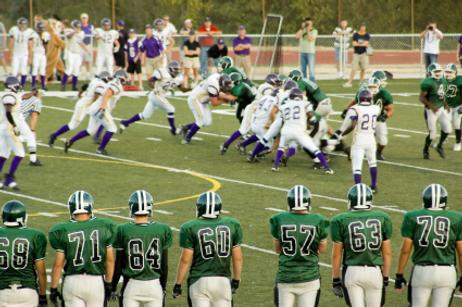High school athletics has become a complex maze of rules and regulations in some states. At the crux of the issue is fairness, which is debated through school boundaries, student eligibility and recruitment rules for high school coaches. Now, two states are taking the proverbial bull by the horns to address these issues in an effort to make high school athletics a level playing field once again.
The Public v. Private Debate in Ohio
Recent talks about splitting teams from private and public schools into separate tournaments in Ohio appear to be on the back burner. A new proposal to combine schools in the state to a single tournament structure that would bring “competitive balance.” According to a report in the Columbus Dispatch, the new proposal came about after months of work by a competitive balance committee for the state.
Previous referendums involved penalizing private schools that have a winning tradition or offering additional help to schools with serious socioeconomic issues. The new proposal does away with these factors, and instead adjusts enrollment numbers for each school based on students that live outside the school’s district. Private schools would also be evaluated based on the district where they are located, according to the Mansfield News Journal.
“It is generally believed that in addition to the size of enrollment, students on a team’s roster who are from outside that school’s geographic boundary or attendance zone does affect athletic success,” Dan Ross, commissioner for the Ohio High School Athletic Association (OHSAA), told the Mansfield News Journal.
Boundaries Impact Athletic Performance
Public schools in Ohio must adhere to district boundaries when forming athletic teams for competition. Private schools have no such boundaries, which means they can attract some of the most gifted athletes in the area if those students are qualified to attend the private school of choice. This practice allows private schools to attract the best athletes, while public schools are limited to the athletes within their district.
Currently, divisions in high school athletics are determined strictly by enrollment numbers. The new proposal would require schools to submit a full roster for each athletic team, complete with the home addresses for each athlete. Student-athletes located outside their school’s district would be subject to a multiplier, which would be calculated into the formula determining enrollment numbers for the school. Each sport would be assigned its own multiplier, based on the total number of players on the team.
The proposal was unanimously accepted by the nine-member OHSAA board. More than three-fourths of school administrators surveyed in 2010 also put their support behind this type of weighted system. If the proposal progresses, it will be put into effect during the 2015-2016 school year. Prior to that time, OHSAA plans to pilot the program at 200 to 250 schools in the next school year, and all Ohio high schools the following year to see whether the program is effective in producing the level playing field hoped for.
This video discusses the perils of being a struggling high school student-athlete.
Bills Have Some Questioning Reach of Florida Lawmakers
A level playing field is also in question in Florida, but for different reasons. In a state where high school and college athletics are often a focus, state lawmakers are getting involved in the process of producing a competitive balance for schools throughout Florida. New bills have been proposed that would restrict investigations by the Florida High School Athletic Association (FHSAA) involving student eligibility.
The change to the rules is necessary, some Florida lawmakers have told Tallahassee.com because student-athletes are often considered “guilty until proven innocent,” rather than the other way around. While these students are waiting for the athletic association to determine their eligibility, they are unable to play on their high school team. Under the new rules, students would be considered eligible to play, unless the FHSAA has evidence the student was actively recruited to the team.
Students would also retain their eligibility to participate in high school athletics if they transfer mid-year from one school to another in the state. Under current guidelines by the FHSAA, students are not eligible for trying out for athletic teams the same year they transfer schools and a coach in their sport moves to the same school.
This video offers one student's take on survival as a student-athlete.
Can Lawmakers Impact High School Athletics?
Lawmakers are touting the new bills as a positive step forward in the area of student rights. However, those opposed to the new laws have voiced concern they would reduce the ability of the FHSAA to screen for recruiting practices at high schools, which could impact the fairness of high school athletics.
In addition, some have questioned whether state lawmakers should be able to trump decisions made by a non-profit organization that has traditionally been able to operate in a relatively autonomous arena. This is especially true with proposals by the legislature to add government appointees to the FHSAA board of directors and cut the budget of the organization.
“For the state legislature to start adopting particular rules for private, not-for-profit organizations about how they can generate their revenue, how they spend their revenue, who’s on their board of directors, who their CEO is, it’s bad political practice,” Roger Dearing, executive director of the athletic association, told WFSU.
Despite protests over the recent proposals, both states appear poised to move forward with their changes. Time will tell whether involvement by state athletic associations and lawmakers will effectively change the face of high school athletics to create a more level playing field for athletic teams across the state.
Additional Resources
The Pros And Cons Of Sports For Middle School Students
Pros and Cons of Sports Competition at the High School Level
Questions? Contact us on Facebook. @publicschoolreview










